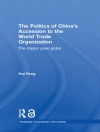This book is a personal account of a research professor of entomology based at University of California Riverside who used a background in physics and electronics to first solve research problems in insect physiology and toxicology. He then applied the same background to addressing insect pest problems in cotton in California and Arizona. The narrative also describes personal interactionsmost good, a few nasty. Choosing very difficult problems to solve and using the newest tools available had the effect of attracting some of the top graduate students and postdoctorals in the world. Sometimes a visiting researcher would bring a new problem with them. Achieving breakthroughs in a number of difference disciplines sometimes created jealousies in workers who did not see the competition coming and resented it. The text also gives some idea what research in a university is like, especially in an applied field like entomology. Although based primarily in Riverside, California, both the narrative and subject are global and reflect the authors perspective.
Про автора
Thomas A. Miller was taught radio repair by the US Army at Fort Knox, Kentucky. He then earned a BA in physics and a Ph D in entomology from UC–Riverside. As a graduate student, he shocked the field of comparative physiology by discovering the myogenicity of insect heartbeat. After doing postdoctoral research in insect neurophysiology at the University of Illinois and the University of Glasgow, he was hired back as an insect toxicologist at UC–Riverside, where he established the field of neurotoxicology of houseflies. This enabled him to determine the modes of action of two of the four major categories of insecticides.
With collaborators, he invented three force transducers to study insect visceral muscles and a number of other devices to record the behavior of insects. These devices showed details of pink bollworm behavior in the cotton fields of southern California. He also invented rapid new methods of measuring resistance to insecticides in pink bollworms in cotton fields, revolutionizing that field. He invented an antibody-based method that revolutionized the detection of diapause in pink bollworm in cotton fields. He also created a transgenic pink bollworm, stunning colleagues in that field. He then helped pioneer the new field of symbiotic control of plant diseases and discovered a treatment for a taste defect in coffee from Rwanda.
For these cumulative accomplishments, he won the prestigious Gregor Mendel Award for Research in Biological Sciences from the Czech Academy of Sciences. He was a Jefferson Science fellow in residence at the US Department of State and a consultant to Wellcome Research Laboratories in the United Kingdom, a number of agrochemical companies, and the Australia cotton industry in Queensland and New South Wales. He also helped organize international scientific meetings in Morocco, Korea, Turkey, and Rwanda. Further, he founded three book series on entomological research.












